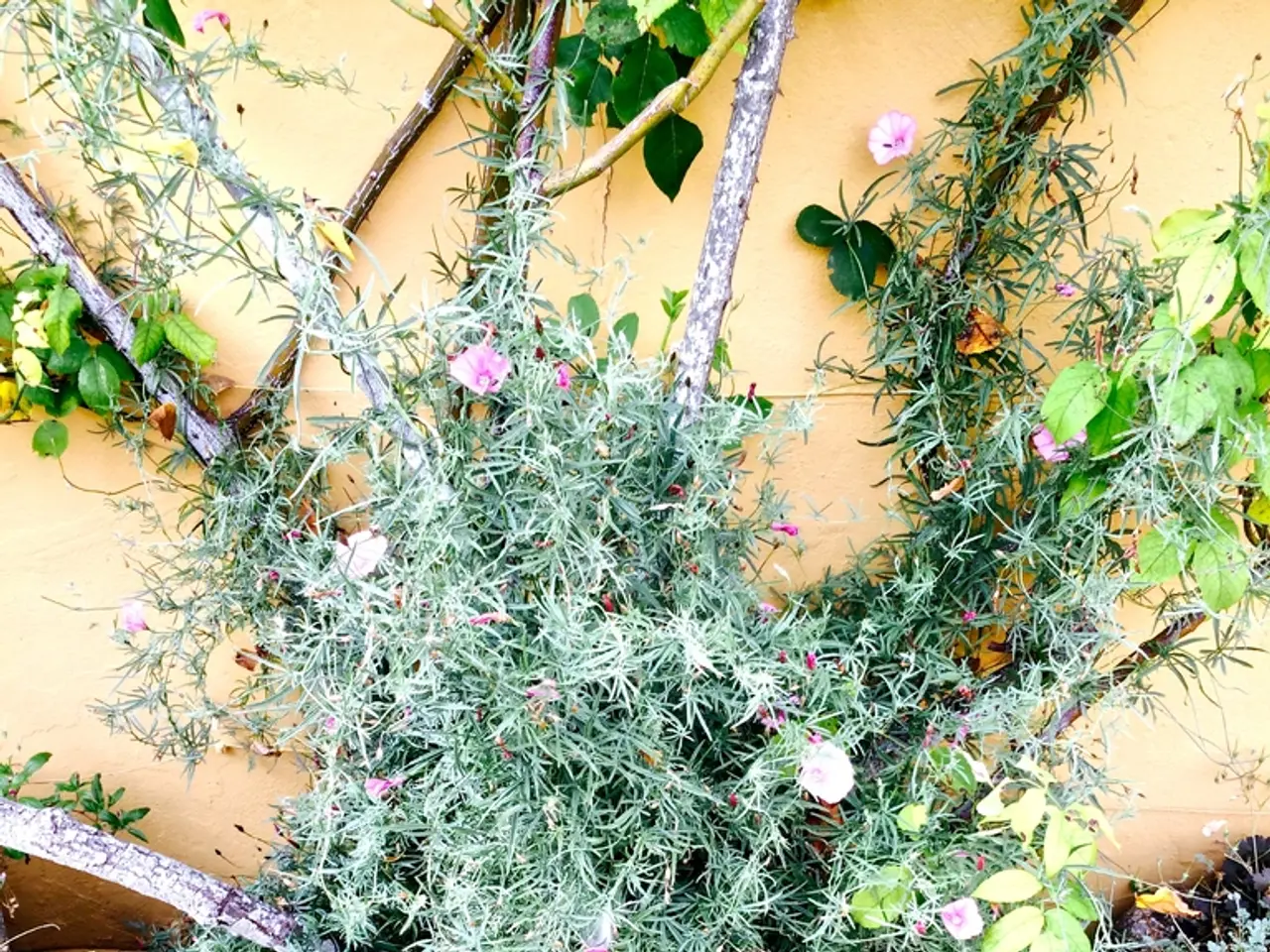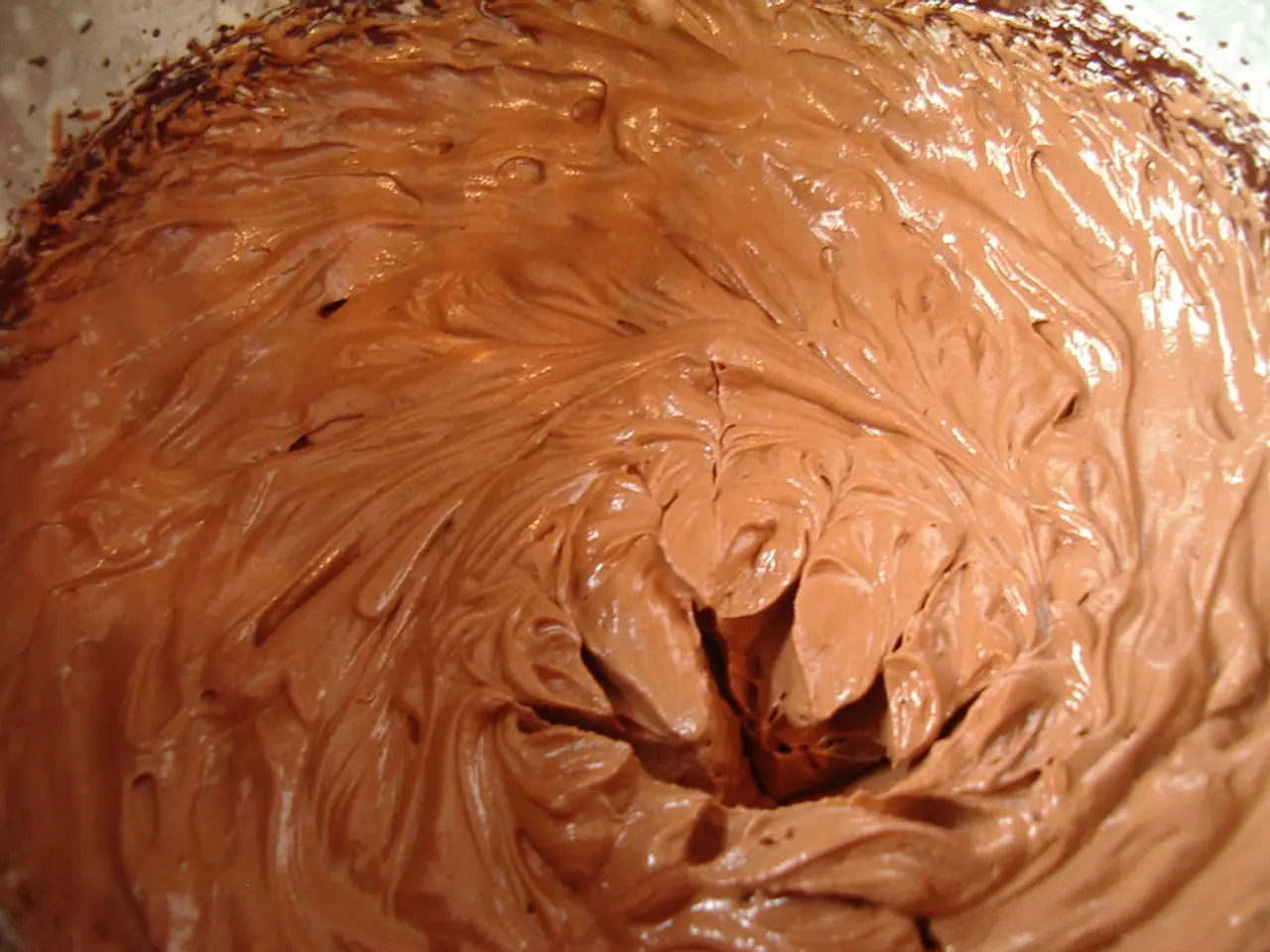Hardy flora handpicked by global authority figures represent the ultimate plant choices for an evolving climate environment
In the face of climate change and urban development, creating gardens that are both hardy and aesthetically pleasing is more important than ever. Here are some top resilient plants recommended by expert garden designers, planting designers, and dry gardening gurus for future gardens.
Trees and Large Shrubs
Tough urban trees like the Eastern Redbud (Cercis canadensis) and Black Tupelo (Nyssa sylvatica) are notable for their resilience in cities. Pitch Pine (Pinus rigida) and Japanese maple (Acer palmatum) are hardy and durable in urban settings, while Crape Myrtle (Lagerstroemia natchez) offers drought tolerance and a long blooming period. Serviceberry (Amelanchier canadensis) provides both resilience and wildlife value. Thorny bio-fence trees like kiluvai (Commiphora sp.) and Bengal currant are favoured for their drought tolerance and biodiversity benefits.
Heat and Drought-Tolerant Ground Covers and Shrubs
Creeping Rosemary (Rosmarinus officinalis 'Prostratus Group') is an evergreen, edible plant that thrives in full sun and poor soils without waterlogging, requiring minimal care. Brachyglottis ‘Sunshine’ variety is an evergreen shrub with silver leaves and golden blooms, highly drought-tolerant and ideal for neglect. Russian sage is another silver-foliaged shrub notable for low maintenance and sun tolerance. Coneflowers (Echinacea) are praised by conservationist Dr. Emily Attlee for their drought resilience and attractiveness to pollinators.
Stunning Perennials
Cerinthe major 'Purpurascens' is a plant with very unusual bell-shaped, purple flowers hooded by deep blue-green glaucous leaves. It blooms from spring to autumn, producing large black seeds that are explosively released. Allow it to go to seed if you want it to persist in your garden.
Daucus carota features white umbels that froth through high-summer plantings and seeds that sprout green in autumn's nest-like seedheads.
Euphorbia rigida has striking silver-blue leaves that spiral around the stems and take on a pink tinge in winter. Flowerheads stay attractive over a long period, bright-yellow in winter, orange in spring and fading to crimson in early summer.
Deschampsia cespitosa 'Goldtau' is smaller and more compact than some, producing a gold haze of gauzy flowers emerging from a buff-green base of slender leaves. It looks amazing planted en masse as a single species, or mixed with airy flowering perennials such as Sanguisorba 'Tanna'.
Persicaria amplexicaulis 'Blackfield' is a clump-forming perennial featuring blood-red flowers that work brilliantly as paint flicks of color through grasses.
Asplenium scolopendrium is a little evergreen fern that is great for filling gaps almost anywhere; it will grow in damp rockeries, dry-stone walls or crevices between boulders.
Crataegus monogyna is a deciduous tree offering cream flowers in spring followed by rich berries in autumn.
Dianthus carthusianorum is a go-to plant for dry meadow and steppe plantings, producing heads of small, vibrant, pink flowers on long stems, over several months.
Hesperantha coccinea 'Major' has crimson-red flowers in late summer and early autumn.
Geranium Patricia (= 'Brempat') has lime-green young leaves, an amazingly long flowering time, from early summer through to November, and is almost a vine, sending out weaving branches that wind their way through other plants, popping out all over the place.
Miscanthus sinensis 'Silberfeder' produces masses of flowers - which is what I grow Miscanthus for - in autumn. These stay on right through the winter. And it still looks great in January. Very upright plants, and the leaves have a silver mid-rib.
Punica granatum var. nana has bright-red flowers emerge in the summer followed by miniature red pomegranate fruits. Leaves turn bright-yellow in autumn before dropping and leaving the fruit to shine.
Myrtus communis is an evergreen shrub known for its delicious spiced aroma and puffs of fluffed cream flowers in late summer followed by dark berries.
Digitalis canariensis is a plant featuring burnt-orange, flame-flicked flowers with an apricot blush.
Hakonechloa macra has arching, elegant, green foliage that sways gently in the breeze. Fades through red to buff in the autumn; it will hold its foliage all the way through winter and can be cut back in early spring before new growth emerges.
Euphorbia myrsinites has one of my favourites among the many Euphorbia species, the broad-leaved, glaucous spurge produces whorls of fleshy leaves on trailing, prostrate stems. Acid-yellow flowers are produced in spring, but this plant has year-round interest.
Calamagrostis brachytricha 'Mona' is a medium-size grass that looks good virtually every day of the year. Its shoots emerge olive green, with purple leaf and flower stems. The silvery-grey, fluffy flowerheads are pink-tinged and it bleaches out perfectly all winter.
Miscanthus sinensis 'Yakushima Dwarf' has plumes of feathery flowers emerge in summer and persist into the autumn, when this ornamental grass really shines; the foliage turns a beautiful mix of red, bronze and gold. Cut back in early spring before new growth emerges.
Pulmonaria 'Diana Clare' has silvery leaves that look good from spring to winter and has blue spring flowers.
Veronicastrum 'Fascination' has invaluable for adding interest to the middle or back of a border, this tall perennial bears long, thin, leafy stems topped with candelabra-like racemes of lilac-blue flowers that bumble bees love. Veronicastrum seedheads offer interest well into winter.
Molinia caerulea 'Heidebraut' has fine plumes of dark flowers are held on long vertical stems borne above a basal mound of strap-like leaves. In autumn it turns bright orange-yellow, and has a transparent, ethereal quality. Best where it is backlit by the sun.
Eryngium yuccifolium has fantastic silver-blue leaves that spiral around the stems. Acid-yellow flowers are produced in spring, but this plant has year-round interest.
Acanthus mollis 'Rue Ledan' has dramatic, tall and elegant flower spikes, loved by bees who crawl right inside the trumpet-shaped flowers. Large, dark-green, serrated leaves at the base that will hold though winter in milder areas.
Cistus x porphyreus 'Purple Patch' is an attractive new selection bred by Yorkshire Cistus specialist Bob Page. It has aromatic, evergreen foliage and large, purple flowers with dark blotches.
Hydrangea aspera Villosa Group has greyish, felted, sensual leaves, purple and white flowers, beautiful flaking bark in the winter, and an open structure.
Luzula sylvatica is an evergreen perennial sedge chosen by Conrad Batten, forming clumps of ribbon leaves and open flowers that rise above the foliage in May and June.
Achillea coarctata is an elegant groundcover from Turkey and the Balkan region with finely cut, silver-grey leaves growing in downy rosettes and contrasting with the bright-yellow flowers. Its strong rhizomes can check erosion on slopes.
Luzula nivea has dense clusters of arching, white flowers emerge in spring that look beautiful grown en masse. Will tolerate very wet and boggy conditions.
Cistus x porphyreus 'Purple Patch' is an attractive new selection bred by Yorkshire Cistus specialist Bob Page. It has aromatic, evergreen foliage and large, purple flowers with dark blotches.
Briza media acts on the muting mauves and scumbling yellows of meadows.
Heuchera villosa 'Autumn Bride' has lovely mounds of soft, downy foliage that looks good from spring through to autumn and then take on fantastic autumn colours. Tall spikes of cream flowers. Works well among open, multi-stem shrubs or trees.
Narcissus 'Actaea' has elegant, beautifully scented flowers and the white flowers are combined with a small, yellow-orange cup that has a darker rim. Lovely in clumps and groups, but naturalised en masse in a meadow it's breath-taking.
Lomelosia minoana is a sub-shrub from southern Crete is probably one of the most attractive plants for dry gardens. Soft, velvety, grey-green foliage and dense mounding habit. The lilac flowers in spring are followed by fluffy seedheads that stay attractive all summer.
Disporum longistylum 'Night Heron' has bamboo-like stems of deep purple age to dark green. Narrow, bell-shaped green-cream flowers are followed by purple-black berries. Almost evergreen in mild climates or a sheltered spot but deciduous where temperatures drop lower. Cut back old growth before new purple shoots appear in spring.
Trifolium ochroleucon has the sulphur clover looks like a giant form of common clover with sulphur-yellow flowers loved by bees and butterflies. Native, but now quite rare, so grow this at home and help preserve the species.
Centaurrea bella is one of the best evergreen groundcovers for dry gardens and attractive to butterflies. Needs little weeding as the plant releases germination inhibiting compounds (allelopathy).
Designer Conrad Batten has chosen Blechnum spicant, a hard fern known for brightening shady areas and combining well with many other shade-loving plants.
Geranium nodosum is a plant chosen by Conrad Batten, known for its pink petals that have a metallic sheen and excellent groundcover for the dappled shade of a tree.
Sanguisorba 'Blackthorn' has low mounds of fresh ferny foliage and tall, upright stems holding narrow, strong pink flowers. Self-supporting and see through. Sanguisorba is great in a meadowy planting with tall equally see-through Molinia cultivars.
Primula vulgaris is indispensable herald of the gardening year. And not just for woodland shade: use it as an early flowering base layer among perennial plantings - it feels at home under the taller herbaceous canopy.
Corylus avellana is a deciduous tree chosen by Conrad Batten, featuring yellow catkins in spring and edible hazel nuts in autumn.
Erigeron annuus is a pop-up plant with delicate, small, white daisy flowers from August to December - really beats any white-flowered aster hands down. Great for mingling with robust perennials. Simply thin out seedlings each year where they're not wanted.
Helleborus argutifolius has luminous-green flower spikes held above dark-green, holly-shaped foliage make this a standout plant. Try dotting through a carpet of Euphorbia amygdaloides var. robbiae.
Digitalis ferruginea has the flowers of this gorgeous daffodil are oh-so elegant and beautifully scented too. The white flowers are combined with a small, yellow-orange cup that has a darker rim. Lovely in clumps and groups, but naturalised en masse in a meadow it's breath-taking.
Salvia multicaulis has small, violet flowers that grow out of large crimson calyces. Extremely attractive as a rockery plant or small groundcover for gravel gardens.
Lomelosia minoana is a sub-shrub from southern Crete is probably one of the most attractive plants for dry gardens. Soft, velvety, grey-green foliage and dense mounding habit. The lilac flowers in spring are followed by fluffy seedheads that stay attractive all summer.
Euonymus europaeus comes into its own in autumn when leaves turn bright red and it produces berries that resemble little pink and orange lanterns. Looks stunning growing alongside ornamental grasses.
Astilbe chinensis var. taquetii 'Purpurlanze' is a multi-season plant with cherry-red leaves in spring, lovely ferny foliage, purple-pink flower spikes, and seedheads that stand all winter long.
Thymus 'Jekka' is a really vigorous, totally bright, fresh, evergreen thyme that doesn't become gappy or straggly. Ideal for groundcover in dry places, or trailing over walls. Covered in mauve flowers on long stalks in early summer.
Achillea coarctata is an elegant groundcover from Turkey and the Balkan region with finely cut, silver-grey leaves growing in downy rosettes and contrasting with the bright-yellow flowers. Its strong rhizomes can check erosion on slopes.
Salvia multicaulis has small, violet flowers that grow out of large crimson calyces. Extremely attractive as a rockery plant or small groundcover for gravel gardens.
The aster in question is probably the longest-flowering, starting in August and often still going in November. Its plants are open and quite floppy.
Rudbeckia fulgida var. deamii has soft apple-green foliage and yellow flowers with black pincushion centres that last until late autumn. Plus perfect winter skeletons.
These plants were highlighted for their ability to survive and thrive in future gardens facing climate stress like heat, drought, urban pollution, and space constraints. Urban landscape gardeners and dry gardening gurus favor plants that combine hardiness with ecological and aesthetic benefits. Therefore, including a mix of resilient trees such as Eastern Redbud and Crape Myrtle, bio-fence trees like kiluvai for multifunctional farm protection, and drought-tolerant ground covers like creeping rosemary can help create future-proof gardens favored by experts.
- The Eastern Redbud (Cercis canadensis) and Black Tupelo (Nyssa sylvatica) are notable for their resilience in cities, while Pitch Pine (Pinus rigida) and Japanese maple (Acer palmatum) are hardy and durable in urban settings.
- Creeping Rosemary (Rosmarinus officinalis 'Prostratus Group') is an evergreen, edible plant that thrives in full sun and poor soils without waterlogging, requiring minimal care.
- Euphorbia rigida has striking silver-blue leaves that spiral around the stems and take on a pink tinge in winter, with flowerheads staying attractive over a long period, bright-yellow in winter, orange in spring, and fading to crimson in early summer.
- Persicaria amplexicaulis 'Blackfield' is a clump-forming perennial featuring blood-red flowers that work brilliantly as paint flicks of color through grasses.
- Digitalis canariensis is a plant featuring burnt-orange, flame-flicked flowers with an apricot blush, often attracting pollinators such as bees and butterflies.




